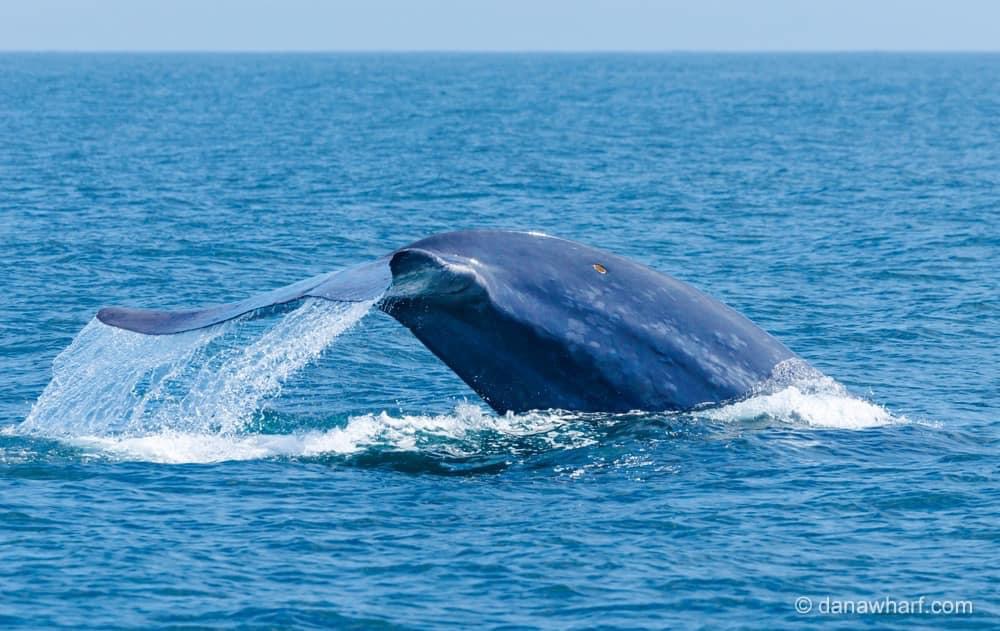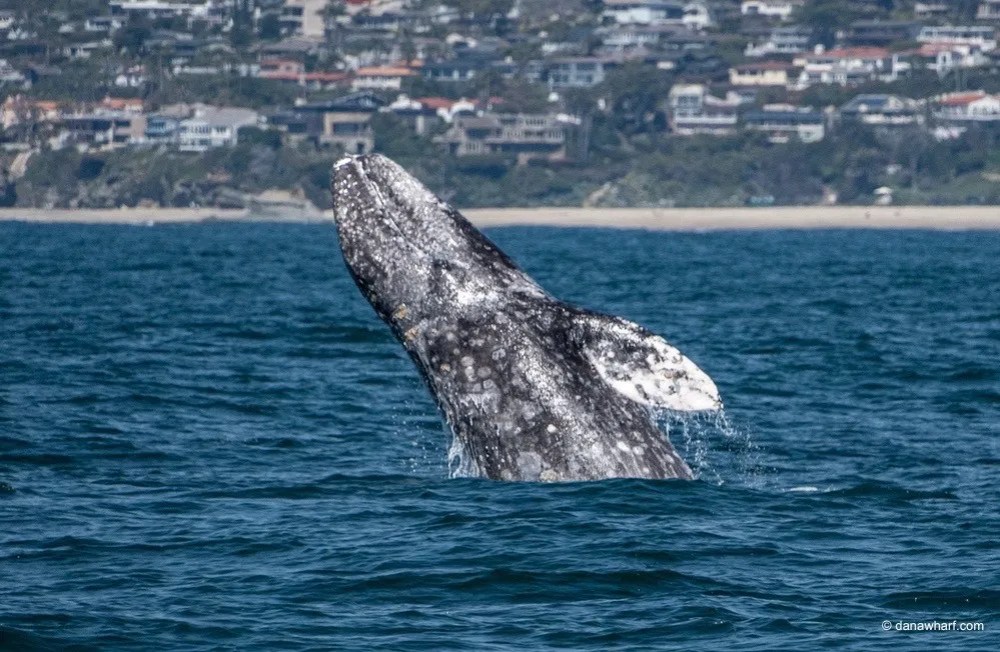How To Identify Blue, Fin, and Gray Whales

 1. Blue Whales: The Largest Animal on Earth
1. Blue Whales: The Largest Animal on Earth
When to See Them: Late spring through early fall (typically May–September)
Key Features:
-
Size: Up to 100 feet long—the largest animal ever known to exist
-
Color: Mottled blue-gray; appears bluish underwater
-
Blow (Spout): Very tall and column-shaped, up to 30 feet high
-
Dorsal Fin: Small and set far back near the tail
-
Behavior: Usually seen alone or in pairs; long, deep dives with strong fluke (tail) lifts
Pro Tip: Look for their massive blow and smooth, arched back that seems to go on forever. Blue whales rarely breach but their sheer size makes them unmistakable when they surface.
 2. Fin Whales: The Sleek Speedsters
2. Fin Whales: The Sleek Speedsters
When to See Them: Late spring through fall, occasionally year-round
Key Features:
-
Size: Second-largest whale species, up to 80 feet long
-
Color: Dark gray with a lighter underside
-
Blow (Spout): Tall and column-shaped, but slightly shorter than a blue whale’s
-
Dorsal Fin: More prominent and slightly hooked, located about two-thirds down the back
-
Unique Trait: Asymmetrical jaw coloring—white on the right, darker on the left
Pro Tip: Fin whales are fast and streamlined, often referred to as the “greyhounds of the sea.” Watch for that distinctive back-and-forth motion when they surface and dive.
 3. Gray Whales: The Coastal Migrators
3. Gray Whales: The Coastal Migrators
When to See Them: December through April (during migration)
Key Features:
-
Size: Medium-sized for baleen whales—up to 50 feet long
-
Color: Mottled gray with barnacle patches and whale lice
-
Blow (Spout): Heart-shaped when viewed from behind
-
Dorsal Ridge: No prominent dorsal fin, but has a knobby ridge along the back
-
Behavior: Frequently breach, spy-hop, and travel close to shore
Pro Tip: Gray whales often migrate just off the coast of Dana Point, making them one of the most commonly sighted species in the winter and early spring months.
Quick Comparison Chart
| Feature | Blue Whale | Fin Whale | Gray Whale |
|---|---|---|---|
| Size | 80–100 ft | 60–80 ft | 40–50 ft |
| Spout Shape | Tall, vertical | Tall, vertical | Heart-shaped |
| Dorsal Fin | Small, far back | Medium, hooked | No fin, knobby ridge |
| Behavior | Deep dives, glides | Fast, sleek, minimal surfacing | Active, breaches, coastal |
| When to See | Summer | Late spring–fall | Winter–early spring |
Experience Them Up Close with Dana Wharf
Whether you’re hoping to see the massive blue whale, the fast and sleek fin whale, or the migrating gray whale, Dana Wharf Whale Watching offers daily tours during peak viewing seasons. Our experienced captains and marine naturalists will help you spot and identify these majestic creatures in their natural habitat.
Book your tour today and come meet the whales of Dana Point!
